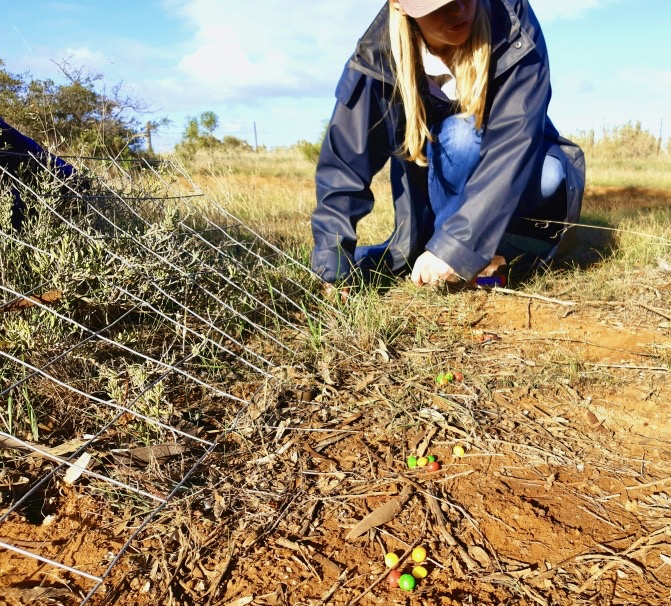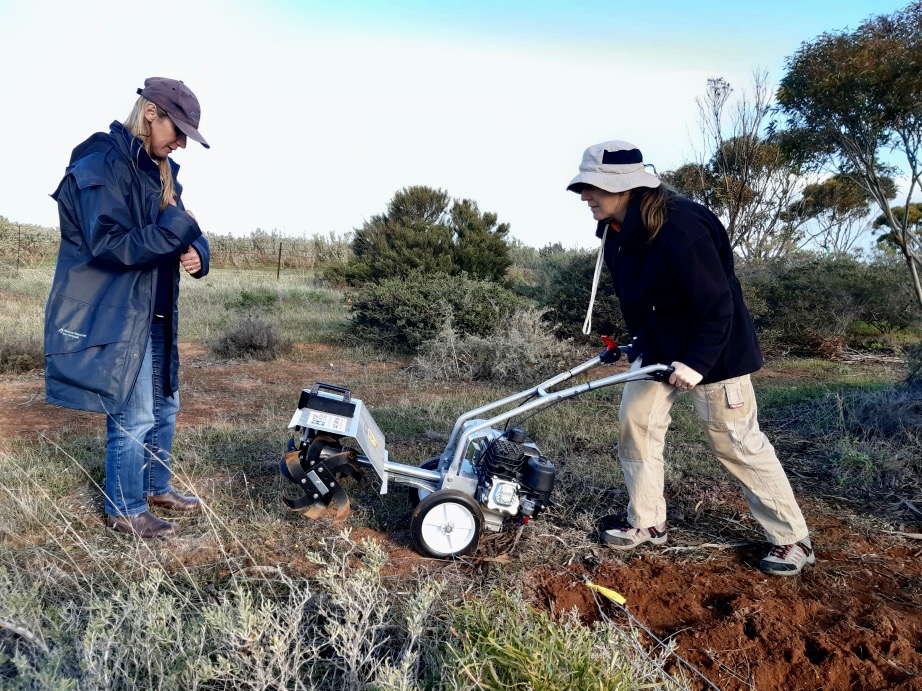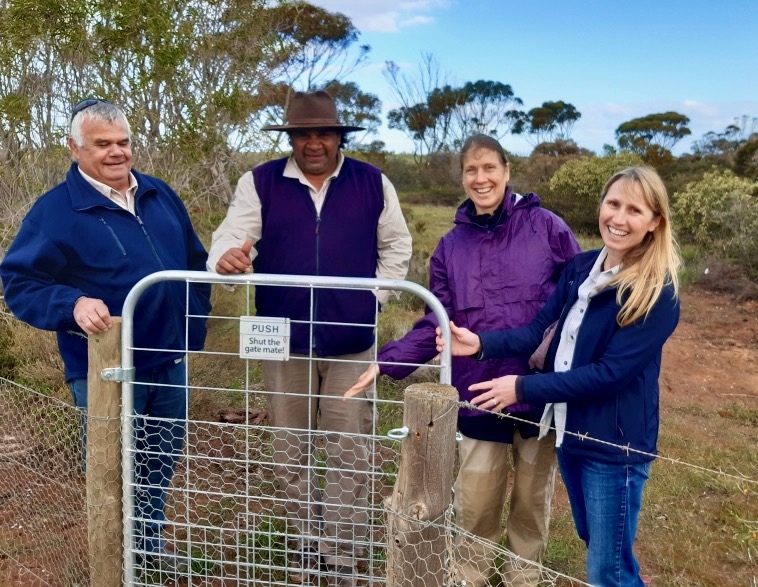Could chocolate be the answer to saving southern Australia's most endangered wattle?
A partnership between the Natural Resources Eyre Peninsula and │╔╚╦┤¾Ų¼ is testing an innovative rotary hoe method to help save Whibley wattle.
AustraliaŌĆÖs Environment Protection and Biodiversity Conservation (EPBC) Act protects 75 Acacia species or subspecies with two of these species╠²deemed national priorities. The╠²whibleyana╠²only grows in southern Australia and protecting the Whibley wattle is recognised as one of the highest and most urgent national conservation priorities.
The ╠²is located in the Tumby Bay area of Eyre Peninsula and currently stands at a mere 320 plants. Over╠²the past two decades, few seedlings have germinated to replace dying Whibley wattle╠²adults, which have a lifespan of 10-20 years. As an Acacia species, they require╠²disturbance to break the hard seed coat and germinate. This has been performed by fire, flood or mammals such as bandicoots and bettongs digging in the past, however these methods are not as available, in this modern era.
[caption id="attachment_15105" align="alignnone" width="671"]
 Image: Chocolate buttons being placed in soil by Geraldine Turner[/caption]
Image: Chocolate buttons being placed in soil by Geraldine Turner[/caption]Fire is a risky conservation strategy for the Whibley wattle as it kills the adult shrubs and future seed bank that would have been produced. Researchers at the │╔╚╦┤¾Ų¼ have╠²had to consider alternative methods of seed disturbance to break the seed coat and trigger germination. It has been noticed that Whibley seedlings appear where roads have been graded, fence lines ripped, and rushing water has scoured soil in a local, old quarry. These activities have brought about the idea of trialling seed disturbance research.
[caption id="attachment_15104" align="alignnone" width="670"]
 Image: Geraldine Turner and Renate Faast with rotary hoe[/caption]
Image: Geraldine Turner and Renate Faast with rotary hoe[/caption]A local site has been selected for trials in understanding how the rotary hoe would move these rare seeds in the soil. Chocolate M&M's and Skittles were chosen as a substitute 'seed' for the trials,╠²before disturbance began around the endangered whibley wattles. The chocolate was buried at 0-10 cm from soil surface (where wattle seeds are expected to be in the seed bank) and additional seeds would be added by researchers ŌĆō to maximise chance of some germination.
The chocolate-laden soil was then with the rotary hoe to simulate what would happen for the whibley seed. The seed movement was measured in 50cm x 50 cm survey quadrats, to ensure the rotary hoe would disturb the seed whilst keeping the seed within the quadrats. The large, bright chocolate buttons were much bigger than tiny, black wattle seeds ŌĆō so researchers could see the success of the seed movement easily.
Project funded by Australian Flora Foundation and Natural Resources Eyre Peninsula. Project led by Dr and Dr╠², The │╔╚╦┤¾Ų¼, in partnership with Geraldine Turner, NREP.
[caption id="attachment_15103" align="alignnone" width="758"]
 Image: L-R: Archie, Fred, Geraldine Turner (NREP) and Renate Faast (UoA) celebrating the new gate installed so the rotary hoe can be taken on site.[/caption]
Image: L-R: Archie, Fred, Geraldine Turner (NREP) and Renate Faast (UoA) celebrating the new gate installed so the rotary hoe can be taken on site.[/caption]
Newsletter & social media
Join us for a sensational mix of news, events and research at the Environment Institute. Find out about╠²new initiatives and╠²share with your friends what's happening.
╠²╠²╠²
